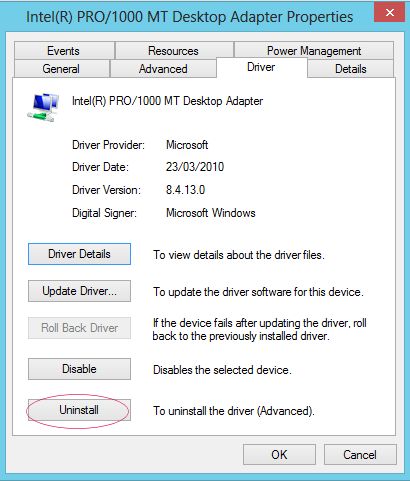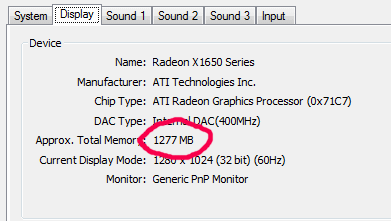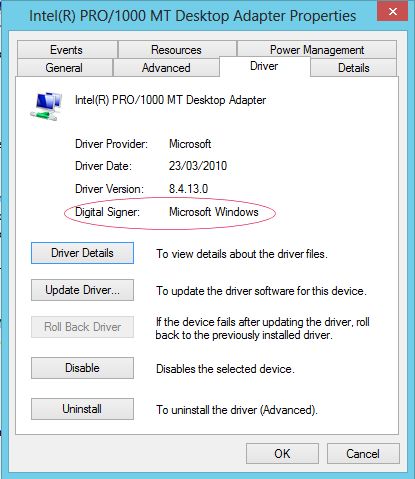
 |
Windows 11 FAQ |
1. What Hardware is compatible with Windows 11?
Most recent hardware in last 5 years will be compatible with Windows 10. To determine
if a piece of older hardware is compatible is to to visit the Microsoft's Hardware
Compatibility Program page.
Minimum requirements are:
I would recommend these requirements Intel i3, i5, i7 or Athlon 64 1GHz, 1GB or RAM, 100GB Hard drive, a DirectX 11 or better 3D graphics card with 8/16 GB RAM and optionally a DVD or Blu-Ray drive.
To see what your current system setup is like, run DXDiag.exe and check out
the following information: System: Processor, Memory. Display:
Directx Features (all enabled).
For disk size, check out size of C: in My Computer.
2. How do I install Drivers for Hardware in Windows 11?
There are a number of ways to install drivers for hardware.
a) Plug'n'Play. You switch off your PC, add the new hardware, reboot
and it will auto detect your new hardware and if a driver is available, will
automatically install it for you. If no driver is available, it will ask you
to specify a CDROM, Floppy disk or folder on your hard disk where the driver
can be found.
b) Control Panel. Open Device Manager via Start, Settings, Control Panel,
Hardware and Sound, Device and Printers.. Here you can add drivers for Printers, Faxes,
Game Controllers, Mouse, Scanners, Cameras and other hardware. If its something
else, click on System and click on Hardware tab and then Device
Manager. Select the Unknown device, select Properties, then Driver
and select Update Driver to install a new driver.
c) Settings. Click on Devices and then Connected Devices and select Add a device to search for new devices connected to your PC.
d) Open Device Manager. Right click My PC and select Scan for hardware changes or Add legacy hardware. This will search for the new hardware and install
drivers for you, have a CD or driver ready when you run this.
e) Third party program. To make things easier, some programs can search, download and install new drivers for you, for example, Driver Easy.
f)
Command line. You can add, list, delete or export drivers to Windows using the PnPUtil command. The DriverQuery command can list installed drivers.
3. Does not recognise my CD-RW or DVD-RW discs?
If you recorded a CD-RW or DVD-RW with a UDF packet driver program such as Nero's
InCD or Roxio Easy Media Creator programs
then you will need to install the latest version of Nero or Creator to be able
to read them again as Windows 11 does not natively recognise those disks.
4. My PC will not switch off when I shutdown?
Enable Power Management in the BIOS and check the settings in the Power Options
Control Panel.
5. Every time I install a driver, I get a 'data invalid' error. How can I install my driver?
What is likely causing the 'data invalid' error in this instance is that the
Permissions setting within the system Registry in Windows XP is incorrect and
thus will not allow windows itself to install the adapter. This is not necessarily
limited to 1394 controllers and you may encounter this issue installing other
types of adapters.
You need to change the Permissions of the registry settings, by loading REGEDT32
and HKEY_LOCAL_MACHINE\SYSTEM\CurrentControlSet\ and look for the device entry
that is causing the problem and set the Permission for that key for Everyone
to have Full Control. Then you will be able to install the driver.
6. How do I uninstall Drivers?
You can uninstall some drivers via the Programs, Uninstall a Program control panel. For
example, ATI add a 'ATI Display Driver' entry which can be uninstalled before
updating them.
Alternatively, a driver can be installed via Device Manager in the Properties
of the device, click Drivers and then click the Uninstall button.

7. What does it mean that a driver is not digitally signed?
To improve the quality of driver software and prevent system instability, Microsoft has added Driver Signing which means that the driver has been tested and approved by Microsoft to be used on Windows 10. Windows needs signed drivers for some hardware such as graphics cards to ensure a stable system. Not all drivers are signed but you can still use them, but at your own risk. You can check for signed or unsigned drivers using the sigverif.exe tool.
To disable device driver signing check run these commands in a command prompt and then reboot:
bcdedit.exe /set loadoptions DDISABLE_INTEGRITY_CHECKS
bcdedit.exe /set TESTSIGNING ON
To re-enable driver signing checks, run these commands:
bcdedit.exe /deletevalue loadoptions
bcdedit.exe /set TESTSIGNING off
8. I cannot find a Windows 11 driver for my hardware, can I use an older driver?
Yes, you can use some drivers written for Windows 8 or later. Be careful, not all old drivers will work on Windows 11. There are loads of websites for drivers, you should start with the manufacturer's web site for your system or motherboard and work up, try Driver Guide. To make it easier to find and install drivers, try the Driver Easy tool.
9. Where are drivers stored on Windows 11?
Drivers are usually stored in C:\Windows\System32\Drivers folder. References to them are stored in the Registry in HKEY_LOCAL_MACHINE\System\CurrentControlSet\Services. Each driver has an registry entry and a line called ImagePath to load a driver.
10. Where do I find out what hardware I have and driver versions?
You can find all this in Device Manager which is accessible by right clicking My Computer, select Manage and then Device Manager. All devices are listed by type. So your graphics card is shown under Display adapters, sound cards are shown under Sound, video and game controllers and so on. Double clicking on a device will bring up Properties and clicking on Driver will give the date and version of the driver.
11. How can I tell if a driver is not installed?
Open Device Manager, and if a driver is not installed, then it will show up as a Unknown device with a Question mark next to it. If you install the wrong driver, then that driver will not start and is indicated so by a message in the device properties and a Exclamation Mark next to it.
12. What are IRQs, I/O, DMA and Memory addresses?
These are hardware resources used by devices to talk to the CPU. Some devices such as ISA, PCI and AGP cards will be allocated an Interrupt Request Queue number so that the system knows which device to talk to, IRQs are allocated to each slot, port or other device on startup. An I/O or Input/Output port is another channel used by the device to talk to the CPU . DMA or Direct Memory Access is used by devices to directly access memory and avoid using the CPU e.g. Hard Disks and FDD controllers. Memory addresses are used to store temporary data such as buffers for I/O devices e.g. Network cards and Modems.
13. How much memory does my PC have?
There are several places you can find out this information.

14. How much memory does my graphics card or chipset have?
You can view this with the DxDiag.exe tool and click on the Display tab and it should say 'Approx. Total Memory: xxxx MB'.

Also, use the tools with your command card, for example, NVIDEA Control Panel, Help, System Information.
15. How do I update the BIOS/UEFI ROM chip?
The BIOS chip does two functions: provide some low level functions to configure
the hardware, provide some minimal input/output functionality for the display
and keyboard and load the operating system from disk. This information can be
updated by what's called 'Flashing the ROM' which means replacing the code in
the ROM chip with new code. How it is done is dependant on the motherboard manufacturer
and the Rom chip manufacturer.
In some cases you have to boot into DOS and run a program to load the new BIOS
code and write to the Flash memory of the boot chip or in some cases you can
run the program from within Windows itself.
The Motherboard and BIOS information is available in the System Information (msinfo32), including BIOS version and BIOS Mode.
16. How do I backup my Drivers?
Try the Driver Easy tool to backup drivers to another disk or folder. Click on Tools, then select which drivers to backup from the list and then select the driver and folder where you want to backup the drivers to and click on Start Backup. You can also backup the C:\Windows\System32\drivers and C:\Windows\System32\DriverStore folders.
17. How do I enable or disable driver signing?
To ensure that your system is secure and stable, all drivers should be digitally signed. You can tell that a driver is signed when you view the driver details in Device Manager and it displays a Driver Signer entry:

If you are a developer, you can have your drivers checked and signed by this procedure.
To disable driver signing, you can do this via the command line or via the Group Policy Management console . For Group Policy go to User Configuration, Administrative Templates, System, Driver Installation and enable 'Code signing for device drivers' and set the option to 'Ignore'. To do it via the command line:
C:\> bcdedit.exe /set loadoptions DISABLE_INTEGRITY_CHECKS
C:\> bcdedit.exe /set TESTSIGNING ON
and then reboot the PC to apply the changes.
18. Where can read more information about hardware?
Try these websites: